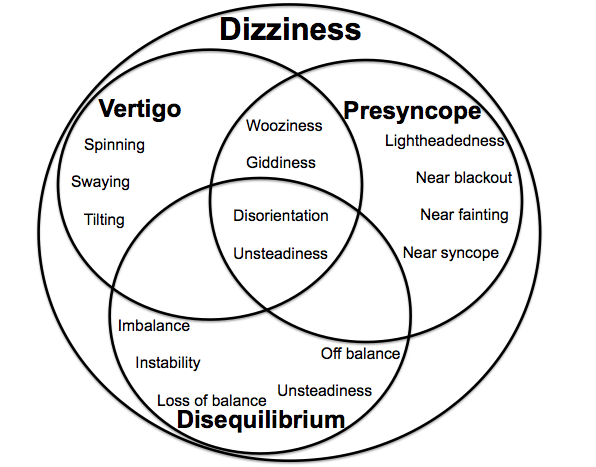Benign paroxysmal positional vertigo diagnostic study of choice
|
Benign paroxysmal positional vertigo Microchapters |
|
Differentiating Benign Paroxysmal Positional Vertigo from other Diseases |
|---|
|
Diagnosis |
|
Treatment |
|
Case Studies |
|
Benign paroxysmal positional vertigo diagnostic study of choice On the Web |
|
American Roentgen Ray Society Images of Benign paroxysmal positional vertigo diagnostic study of choice |
|
FDA on Benign paroxysmal positional vertigo diagnostic study of choice |
|
CDC on Benign paroxysmal positional vertigo diagnostic study of choice |
|
Benign paroxysmal positional vertigo diagnostic study of choice in the news |
|
Blogs on Benign paroxysmal positional vertigo diagnostic study of choice |
Editor-In-Chief: C. Michael Gibson, M.S., M.D. [1]; Associate Editor(s)-in-Chief: Fahimeh Shojaei, M.D.
Overview
The diagnostic study of choice for BPPV is patient history and observing nystagmus on Dix-Hall pike maneuver.
Diagnostic Study of Choice
|
{{#ev:youtube|https://www.youtube.com/watch?v=RNBJLed_Slc&t=4s%7C500}} |
Study of choice
The diagnostic study of choice for BPPV is patient history and observing nystagmus on Dix-Hall pike maneuver.[1][2][3]
Investigations:
- Among the patients who present with clinical signs of BPPV, the Dix-Hallpike maneuver is the most specific test for the diagnosis.
Diagnostic results
The following findings are confirmatory for BPPV:
- Recurrent brief vertigo attack which starts with certain head movements.
- Nystagmus on Dix-Hallpike maneuver.
Sequence of Diagnostic Studies
The various investigations must be performed in the following order:
If patients doesn't respond to treatment or doesn't show the typical nystagmus on Dix-Hall pike maneuver, in order to rule out other abnormalities we may perform some additional test such as:
- Electronystagmography (ENG) or video nystagmography (VNG)
- Audiometry
- Neuroimaging
For more information about these tests, click here.
Diagnostic criteria for posterial canal BPPV
| Subtypes | Explanation |
|---|---|
| History |
|
| Physical exam |
|
Diagnostic approach
| Patient present with dizziness | |||||||||||||||||||||||||||||||||||||||||||||||||||||||||||||||
| Loss of consciousness? | |||||||||||||||||||||||||||||||||||||||||||||||||||||||||||||||
| Yes | No | ||||||||||||||||||||||||||||||||||||||||||||||||||||||||||||||
| Sense of motion/ spinning? | |||||||||||||||||||||||||||||||||||||||||||||||||||||||||||||||
| Sweating? Heaviness sensation in the legs? "Tunnel" vision? Feeling warm or hot? Nausea? Vomiting? | History of seizure Aura Post-ictal phase Uncontrollable muscle spasms Drooling or frothing at the mouth Teeth clenching Tongue biting Sudden, rapid eye movements | Yes | No | ||||||||||||||||||||||||||||||||||||||||||||||||||||||||||||
| Other | Syncope | Seizure | Vertigo | ||||||||||||||||||||||||||||||||||||||||||||||||||||||||||||
| Sudden onset? Horizental vertigo? Auditory symptoms? No neurological problem? | |||||||||||||||||||||||||||||||||||||||||||||||||||||||||||||||
| Yes | No | ||||||||||||||||||||||||||||||||||||||||||||||||||||||||||||||
| Peripheral | Central | ||||||||||||||||||||||||||||||||||||||||||||||||||||||||||||||
| BPPV Vestibular neuritis HSV oticus Meniere disease Labyrinthine concussion Perilymphatic fistula Semicircular canal dehiscence syndrome Vestibular paroxysma Cogan syndrome Vestibular schwannoma Otitis media Aminoglycoside toxicity Recurrent vestibulopathy | Vestibular migraine Epileptic vertigo Multiple sclerosis Brain tumors Crebellar infarction/hemorrhage Brain stem ischemia Chiari malformation Parkinson | ||||||||||||||||||||||||||||||||||||||||||||||||||||||||||||||
| Hyperventilation Psychiatric symptoms | Balance problem | Sweating Tunnel Vision Nausea Heart palpitations Abdominal discomfort Slurred speech | |||||||||||||||||||||||||||||||||||||||||||||||||||||||||||||
| Psychogenic dizziness | Dysequilibrium | Presyncope | |||||||||||||||||||||||||||||||||||||||||||||||||||||||||||||
References
- ↑ Lee SH, Kim JS (June 2010). "Benign paroxysmal positional vertigo". J Clin Neurol. 6 (2): 51–63. doi:10.3988/jcn.2010.6.2.51. PMC 2895225. PMID 20607044.
- ↑ Chang MB, Bath AP, Rutka JA (October 2001). "Are all atypical positional nystagmus patterns reflective of central pathology?". J Otolaryngol. 30 (5): 280–2. PMID 11771020.
- ↑ Dorresteijn PM, Ipenburg NA, Murphy KJ, Smit M, van Vulpen JK, Wegner I, Stegeman I, Grolman W (June 2014). "Rapid Systematic Review of Normal Audiometry Results as a Predictor for Benign Paroxysmal Positional Vertigo". Otolaryngol Head Neck Surg. 150 (6): 919–24. doi:10.1177/0194599814527233. PMID 24642523.
